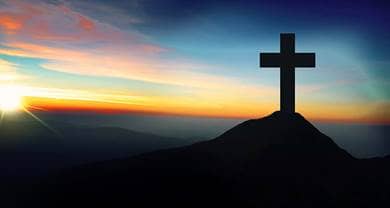- Trending:
- Pope Leo Xiv
- |
- Israel
- |
- Trump
- |
- Social Justice
- |
- Peace
- |
- Love

RELIGION LIBRARY
Presbyterian and Reformed
Sacred Time
While time is itself created by God, and so all time in a sense is sacred, Reformed Christians set aside certain times to remove themselves from everyday tasks and focus on God and their relationship to God. The basic unit of sacred time in the Reformed tradition is the Sunday service of worship. The basic structure of the worship service is a call to worship, a hymn of praise, a confession of sin, a declaration of pardon, a response, a prayer for illumination, an Old Testament reading, a New Testament reading, a sermon, a creed, prayers of the people, offering of the peace, collection of offering, prayer of thanksgiving, the Lord's Prayer, hymn, charge, and benediction. If there is a baptism it occurs after the creed; if the Lord's Supper is celebrated it occurs after the offering. Two important features to note are the structure-confession/forgiveness/sermon-and the fact that (like many Protestant churches) the sacraments (communion and baptism) are never celebrated without a sermon.
The Reformed liturgical calendar organizes weekly services throughout a calendar year based on a cycle that recapitulates major events in the life of Jesus and the early Church. The events associated with Easter shift in the secular calendar, because the date of Easter is celebrated on the first Sunday after the first full moon after the spring equinox. The events associated with Christmas are fixed, since Christmas is always on December 25.
The year is divided into:
- Advent (the four Sundays before Christmas; Advent ends at sundown of Christmas Eve)
- Christmas Eve and Christmastide (from sundown Christmas Eve through January 5) January 6 is Epiphany Day, which marks the arrival of the three wise men to worship the baby Jesus.
- Lent (seventh Sunday before Easter until sundown Easter Eve) Lent begins with Ash Wednesday.
- Holy Week, which is the week that commemorates Jesus' last week before his crucifixion. Palm Sunday marks his entrance into Jerusalem; Holy Thursday or Maundy Thursday marks the Last Supper of Jesus and his disciples; Good Friday marks his crucifixion.
- Eastertide (from sunset Easter Eve through to Pentecost). Easter marks the resurrection of Jesus from the grave, and is generally considered the holiest day of the year by Reformed Christians.
- Pentecost (and the week following). Pentecost derives from a Jewish holiday. The word literally means "the fiftieth day." It marks the descent of the Holy Spirit on Jesus' followers as they were gathered following Jesus' death and resurrection. The Spirit allowed them to speak in different languages, and to understand one another. It typically marks the founding of the Church.
- Trinity Sunday, a day to recognize and honor the triune nature of God.
In addition to this liturgical calendar there are services for "Special Days," which include New Year's, Christian Unity (to pray for reunification of the Christian churches), World Communion, Reformation Sunday (the Sunday on or before October 31, which is the date Martin Luther nailed his 95 Theses to the castle door in Wittenberg [link to Lutheranism/Origins/Founders], Thanksgiving Day, and Days of Civic or National Significance.
Note that, while the secular calendar makes no distinctions about quality of time (each unit of time is equal, and of equal significance), the liturgical calendar ebbs and flows in intensity. Periods of special sacredness cluster around Easter and Christmas. Thus sacred time is not homogenous, but gives shape and pattern to the annual cycle.
Study Questions:
1. Should sacred time be distinguished within the Reformed tradition? Explain.
2. How are basic units of sacred time structured within the Presbyterian Church?
3. What is the Reformed Liturgical Calendar? What events does it include?
4. Why should it be noted that sacred time is not homogeneous?










